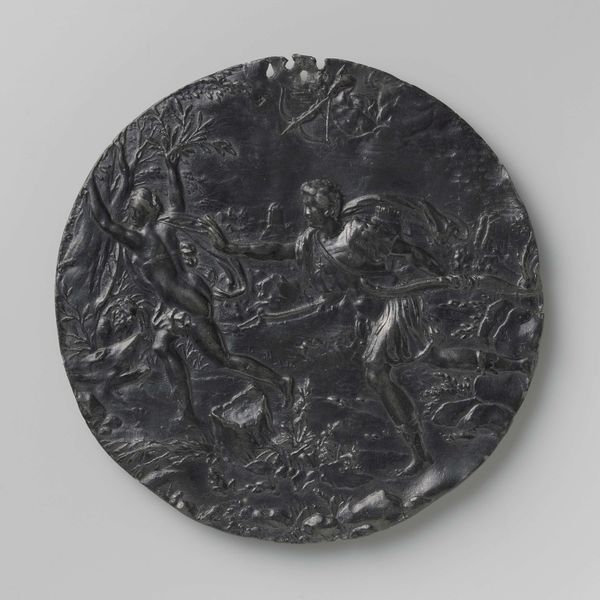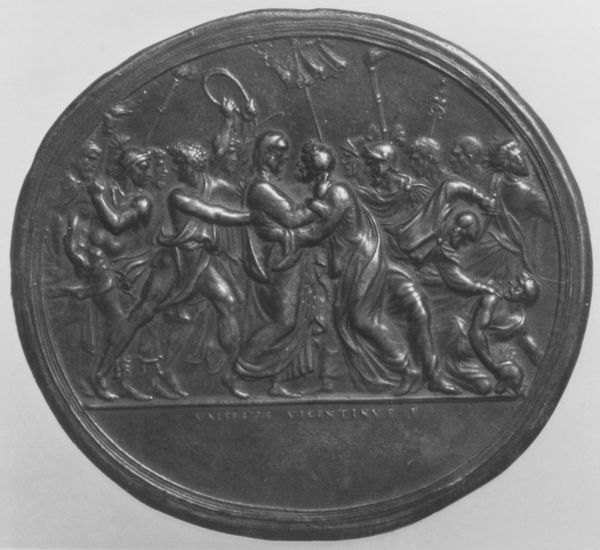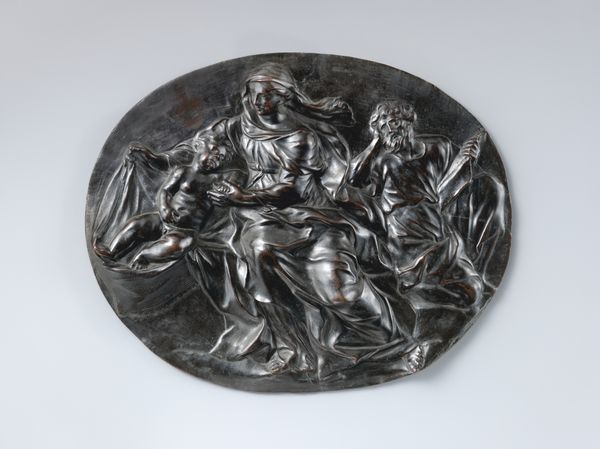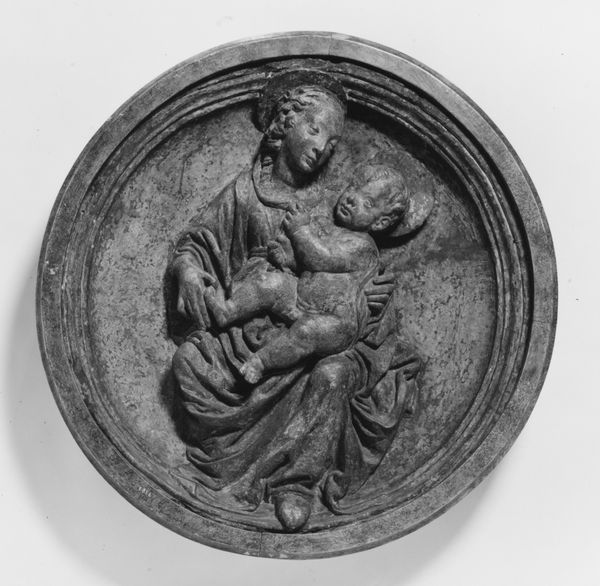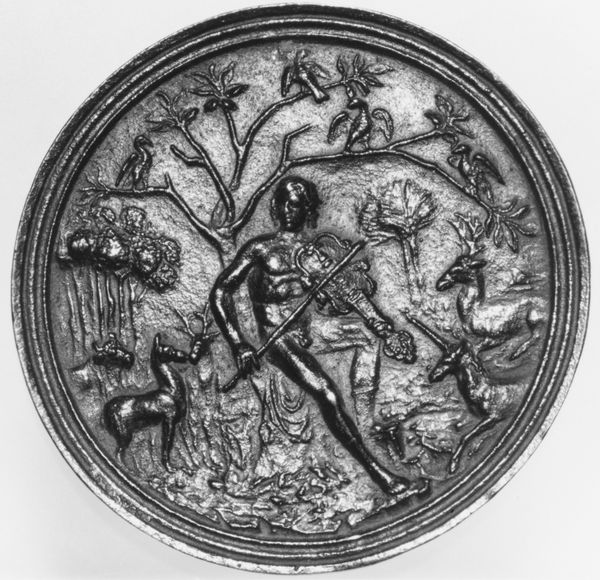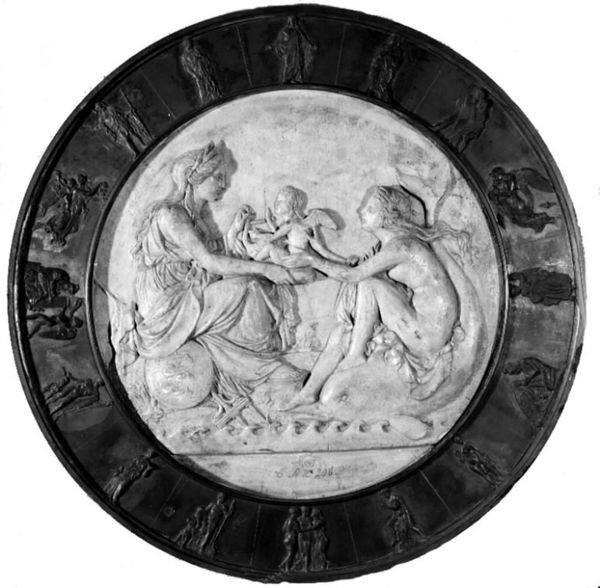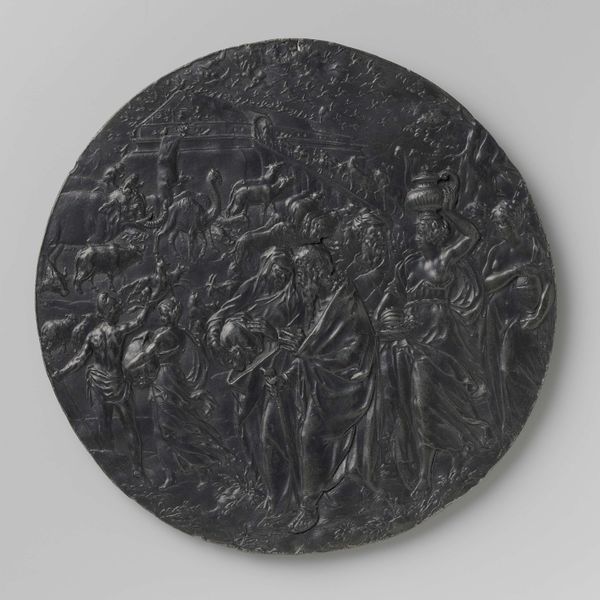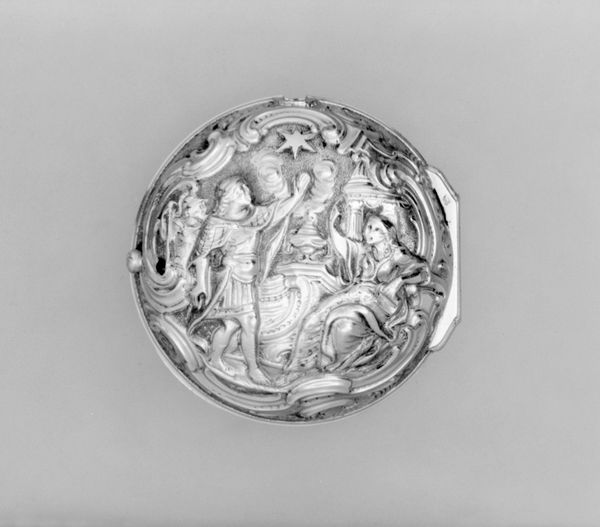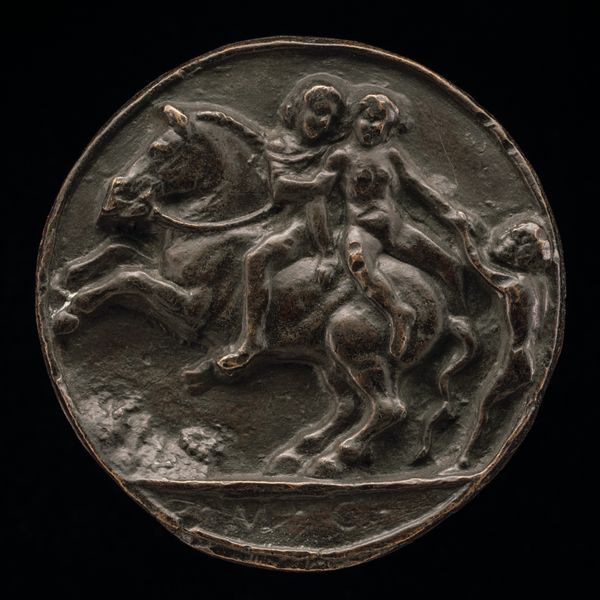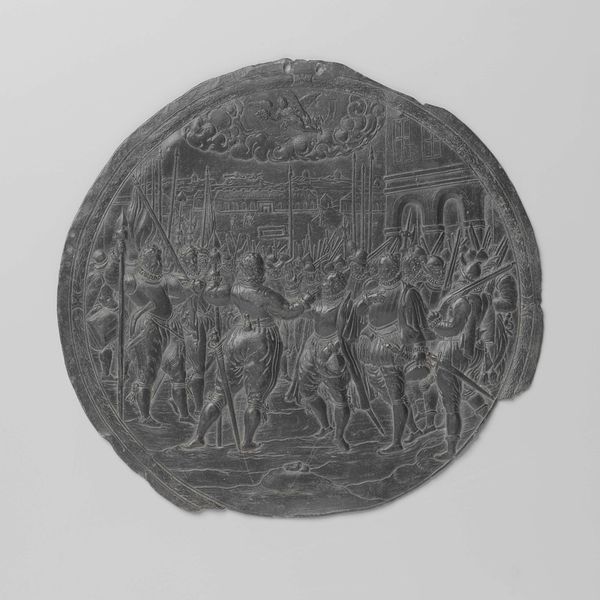
relief, sculpture
#
narrative-art
#
baroque
#
sculpture
#
relief
#
figuration
#
sculpting
#
sculpture
#
genre-painting
#
history-painting
#
decorative-art
#
nude
Dimensions: 22 1/2 × 24 1/4 in. (57.2 × 61.6 cm)
Copyright: Public Domain
Raphael's "The Temptation of Adam and Eve," now at the Metropolitan Museum of Art, is a tonodo showing a pivotal biblical narrative. The circular form encloses a scene dense with figures and foliage, rendered in striking chiaroscuro. The strong contrast between light and shadow not only models the figures but also heightens the drama of the moment. The composition is structured around the tree, with the serpent coiled menacingly. Eve is depicted in the act of passing the forbidden fruit to Adam. Raphael uses the classical ideal of human form, imbuing the scene with a sense of timelessness. However, this classical serenity is disrupted by the tension inherent in the narrative. The artist is exploring ideas about morality and human nature. The circular format, with its suggestion of enclosure, echoes the themes of confinement and fateful choice. The sculpture encapsulates the moment when innocence transitions to knowledge, with all its implications. As you observe the work, consider how Raphael uses classical forms to convey complex moral and philosophical ideas. Notice the formal qualities, such as balance and proportion, interact with the dramatic narrative content, leaving us to consider questions of choice, knowledge, and the human condition.
Comments
No comments
Be the first to comment and join the conversation on the ultimate creative platform.
